
How to Use MCP23017: Examples, Pinouts, and Specs
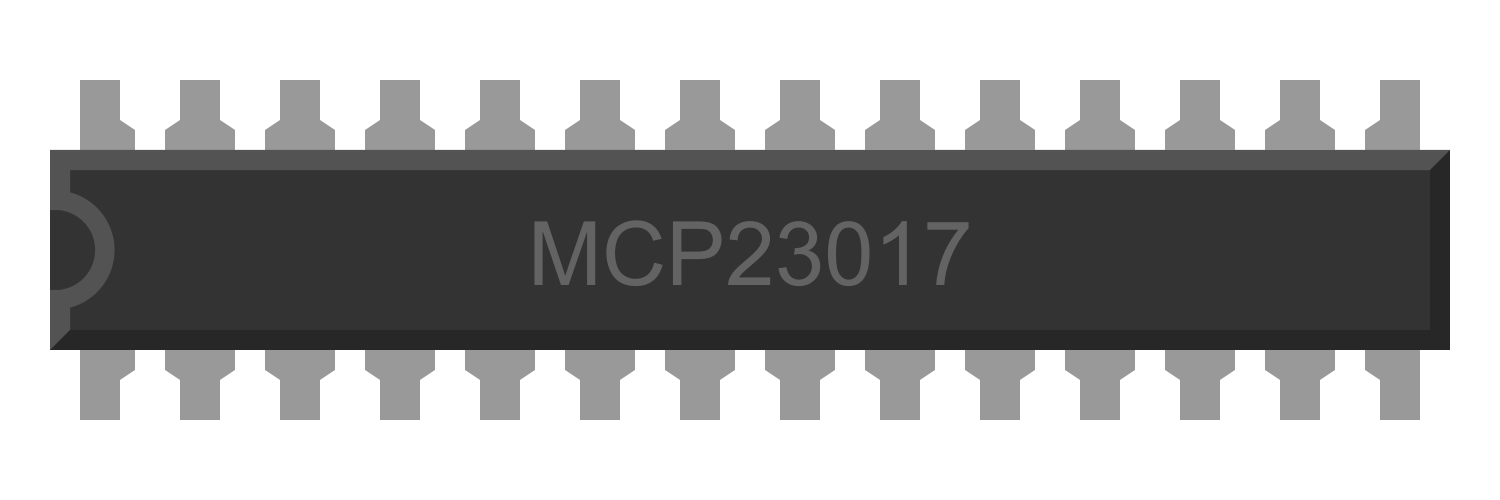
 Design with MCP23017 in Cirkit Designer
Design with MCP23017 in Cirkit DesignerIntroduction
The MCP23017 is a versatile I/O expander from Microchip that allows a microcontroller to control up to 16 additional digital inputs or outputs via a two-wire I2C serial interface. This component is particularly useful in applications where additional I/O pins are needed, such as in button matrices, LED control, or when interfacing with multiple sensors. Common applications include home automation systems, industrial controls, and hobbyist projects where expansion of I/O capabilities is required.
Explore Projects Built with MCP23017
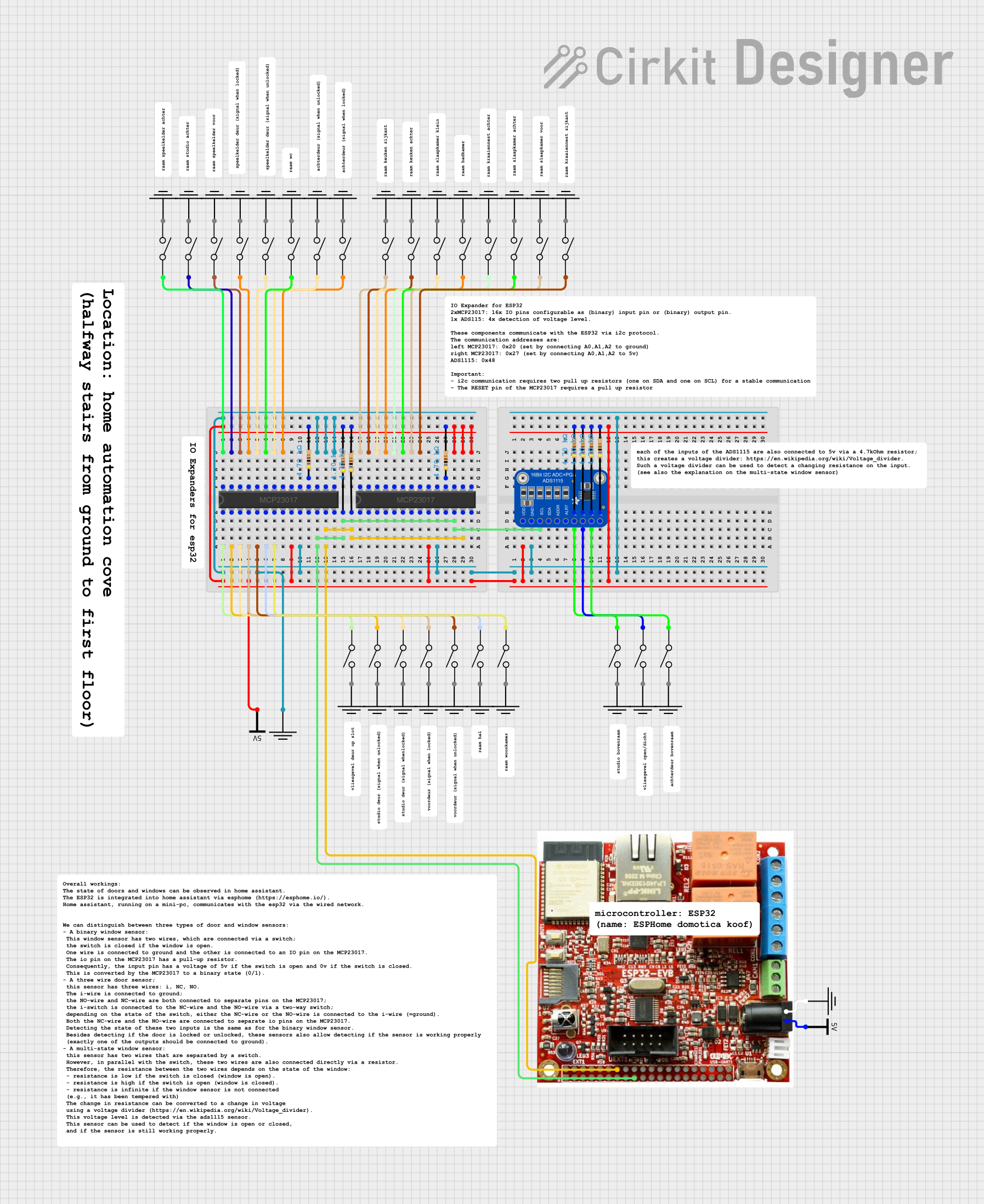
 Open Project in Cirkit Designer
Open Project in Cirkit Designer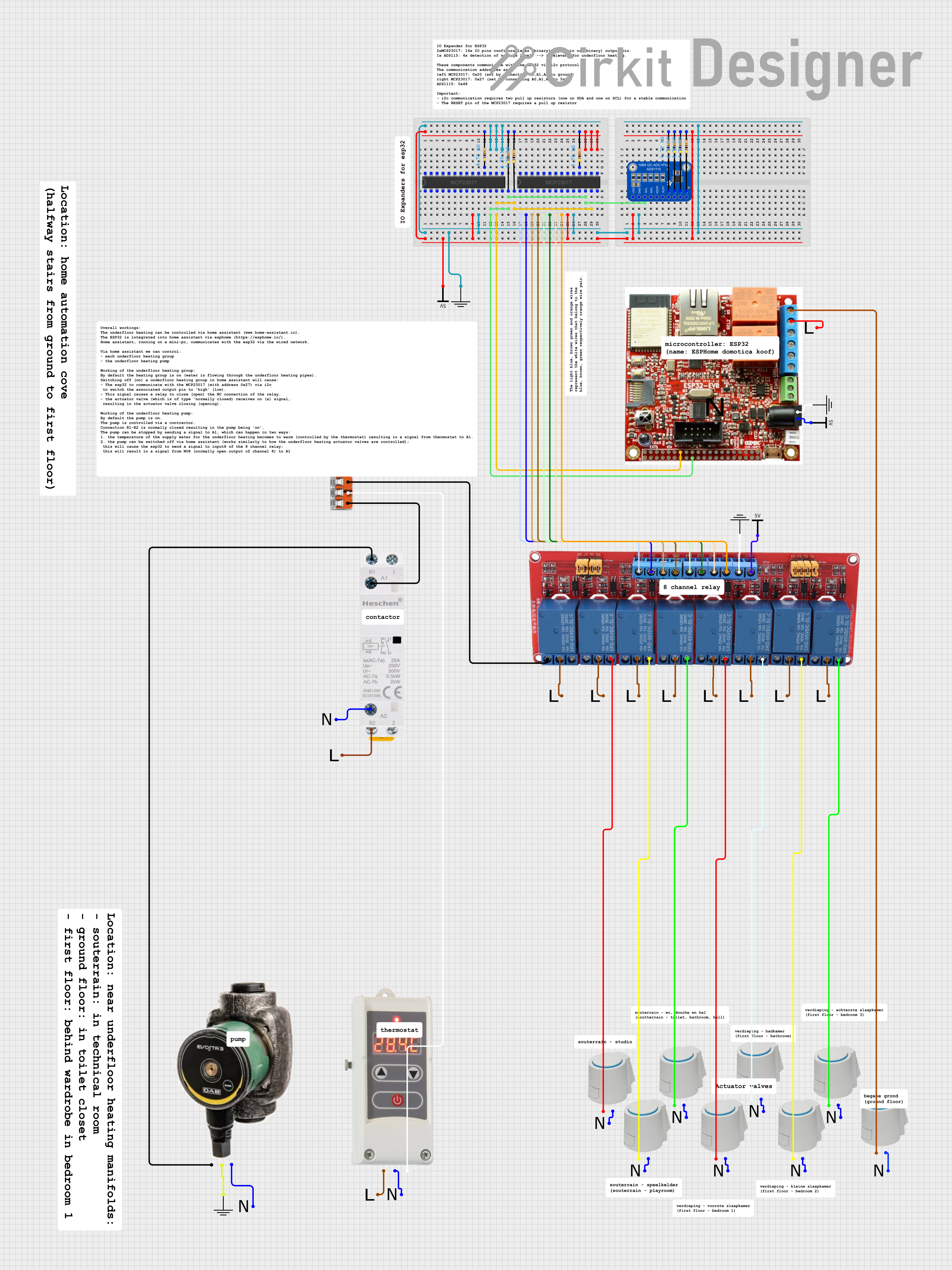
 Open Project in Cirkit Designer
Open Project in Cirkit Designer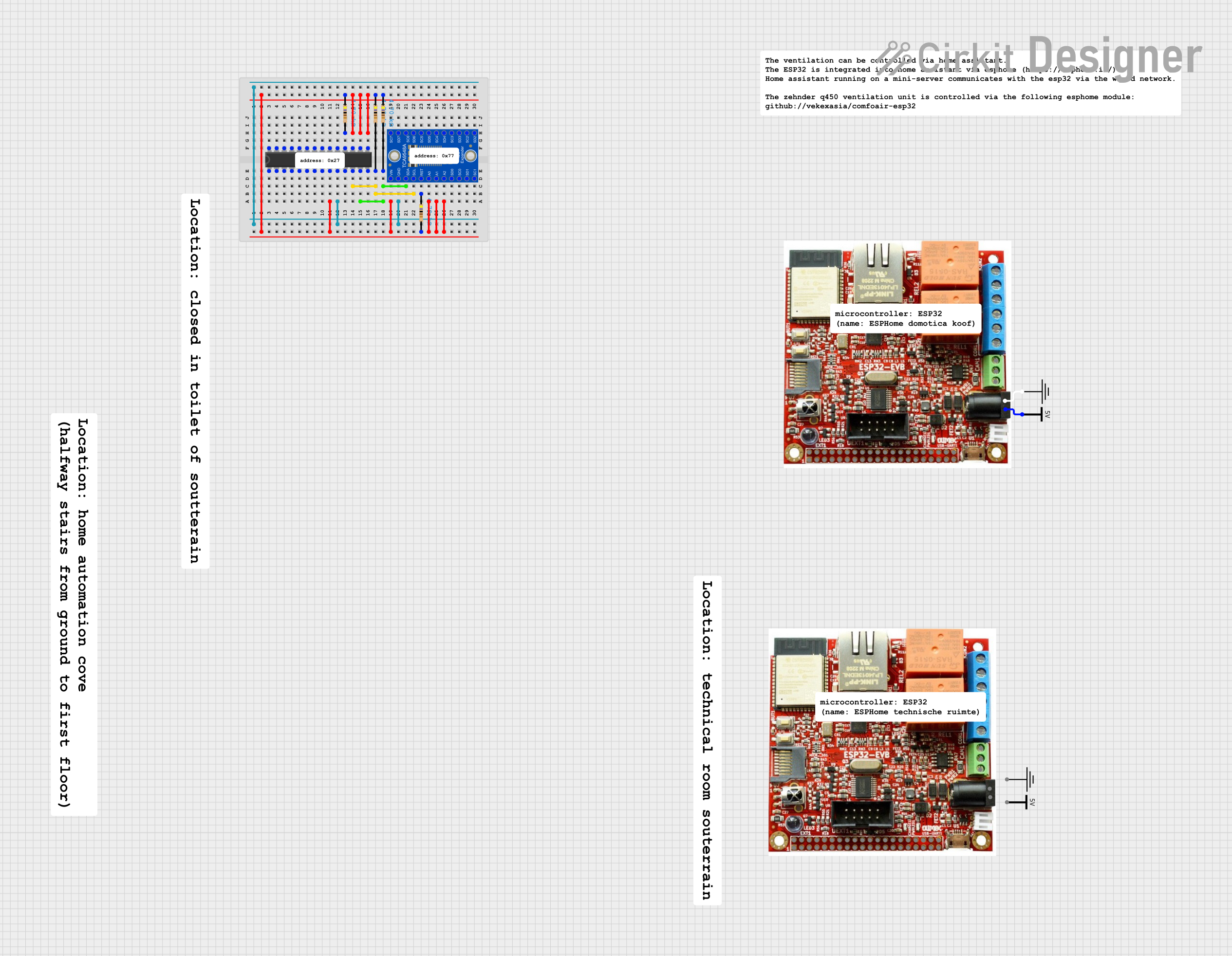
 Open Project in Cirkit Designer
Open Project in Cirkit Designer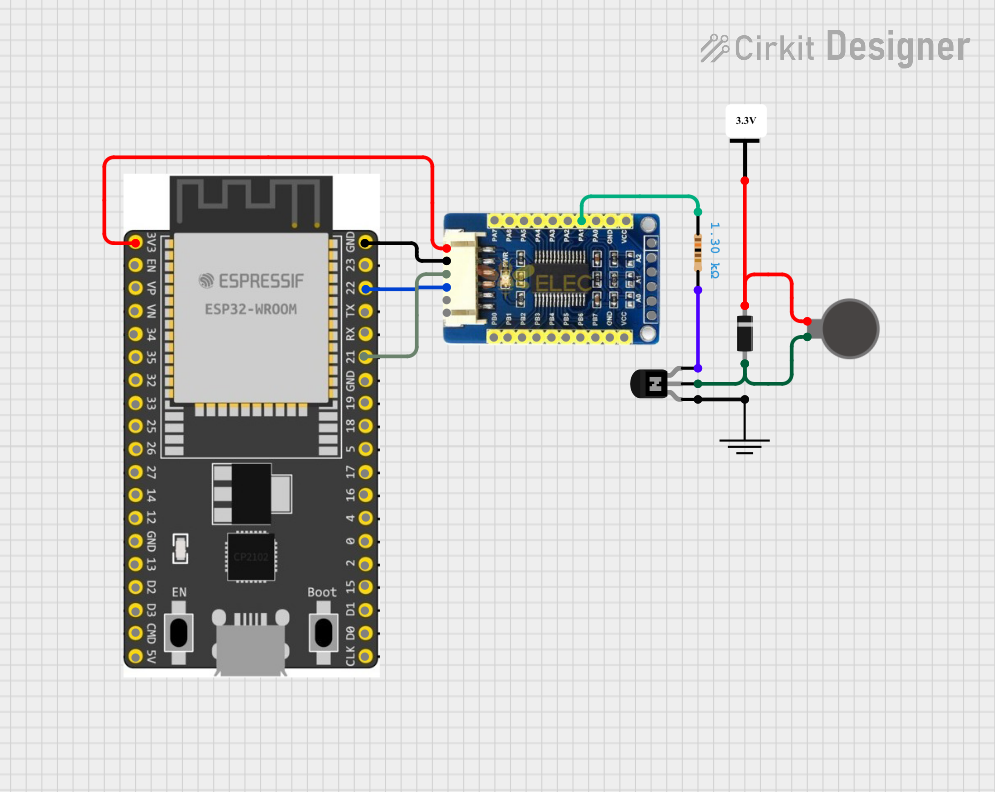
 Open Project in Cirkit Designer
Open Project in Cirkit DesignerExplore Projects Built with MCP23017

 Open Project in Cirkit Designer
Open Project in Cirkit Designer
 Open Project in Cirkit Designer
Open Project in Cirkit Designer
 Open Project in Cirkit Designer
Open Project in Cirkit Designer
 Open Project in Cirkit Designer
Open Project in Cirkit DesignerTechnical Specifications
Key Technical Details
- Supply Voltage (VDD): 1.8V to 5.5V
- Input/Output Sink Current (IOL): 25 mA (max)
- Input/Output Source Current (IOH): -25 mA (max)
- Operating Temperature: -40°C to +125°C
- Communication Interface: I2C serial interface
- I2C Addresses: 8 different addresses selectable via hardware (0x20-0x27)
Pin Configuration and Descriptions
| Pin Number | Pin Name | Description |
|---|---|---|
| 1-2 | A0-A1 | Hardware address pins to configure the I2C address |
| 3 | NC | No Connection (must be left unconnected) |
| 4 | VSS | Ground (0V) reference for the power supply |
| 5-12 | GPB0-GPB7 | General Purpose I/O pins (Port B) |
| 13 | VDD | Positive power supply pin |
| 14 | SCL | Serial Clock Line for I2C communication |
| 15 | SDA | Serial Data Line for I2C communication |
| 16-23 | GPA0-GPA7 | General Purpose I/O pins (Port A) |
| 24 | RESET | Active-low reset input |
| 25-28 | NC | No Connection (must be left unconnected) |
Usage Instructions
Interfacing with a Microcontroller
- Power Connections: Connect VDD to the microcontroller's power supply (1.8V to 5.5V) and VSS to ground.
- I2C Connections: Connect SCL and SDA to the corresponding I2C clock and data lines on the microcontroller. Pull-up resistors may be required on these lines.
- Address Selection: Set the hardware address by connecting A0 and A1 to either VDD or VSS. This will determine the I2C address of the MCP23017.
- Reset (Optional): Connect the RESET pin to a digital output on the microcontroller if hardware reset functionality is desired.
- I/O Configuration: Configure the I/O pins (GPA0-GPA7 and GPB0-GPB7) as inputs or outputs by writing to the IODIRA and IODIRB registers.
Important Considerations and Best Practices
- Ensure that the power supply voltage is within the specified range for the MCP23017.
- Use pull-up resistors on the I2C lines as required by the microcontroller's I2C specification.
- Avoid exceeding the maximum current ratings for the I/O pins.
- When using the MCP23017 with a microcontroller at a different voltage level, ensure proper logic level shifting for the I2C lines.
Example Code for Arduino UNO
#include <Wire.h>
// MCP23017 I2C address (configured by A0, A1 pins)
const int mcpAddress = 0x20;
// Registers addresses
const int IODIRA = 0x00; // I/O direction register for port A
const int IODIRB = 0x01; // I/O direction register for port B
void setup() {
Wire.begin(); // Initialize I2C
pinMode(13, OUTPUT); // Use onboard LED for output
// Set all GPA pins to output, all GPB pins to input
mcpWrite(IODIRA, 0x00); // All A pins as output
mcpWrite(IODIRB, 0xFF); // All B pins as input
}
void loop() {
// Toggle all GPA pins
mcpWrite(0x12, 0xFF); // Turn on all GPA pins
delay(500);
mcpWrite(0x12, 0x00); // Turn off all GPA pins
delay(500);
}
// Function to write data to a register on MCP23017
void mcpWrite(int reg, int data) {
Wire.beginTransmission(mcpAddress);
Wire.write(reg); // Register address
Wire.write(data); // Data to write
Wire.endTransmission();
}
Troubleshooting and FAQs
Common Issues
- I2C Communication Failure: Ensure that the MCP23017 is powered correctly and that the SCL and SDA lines are connected properly with pull-up resistors.
- Incorrect Pin Behavior: Verify that the I/O pins have been configured correctly by writing to the IODIRA and IODIRB registers.
- Device Not Responding: Check the hardware address pins (A0, A1) and ensure they match the address used in the code.
Solutions and Tips for Troubleshooting
- Use an I2C scanner sketch to confirm that the MCP23017 is detected on the I2C bus.
- Check for solder bridges or cold solder joints that might be causing shorts or open circuits.
- Ensure that the RESET pin is not inadvertently being pulled low during operation, which would reset the device.
FAQs
Q: Can I use multiple MCP23017 devices on the same I2C bus? A: Yes, you can use up to 8 MCP23017 devices on the same I2C bus by configuring each with a unique hardware address (0x20-0x27).
Q: What is the maximum I2C clock frequency the MCP23017 can handle? A: The MCP23017 supports a maximum I2C clock frequency of 1.7 MHz in HS mode.
Q: Do I need to use external pull-up resistors on the I/O pins? A: No, external pull-up resistors are not required on the I/O pins unless you are using them in an open-drain configuration.